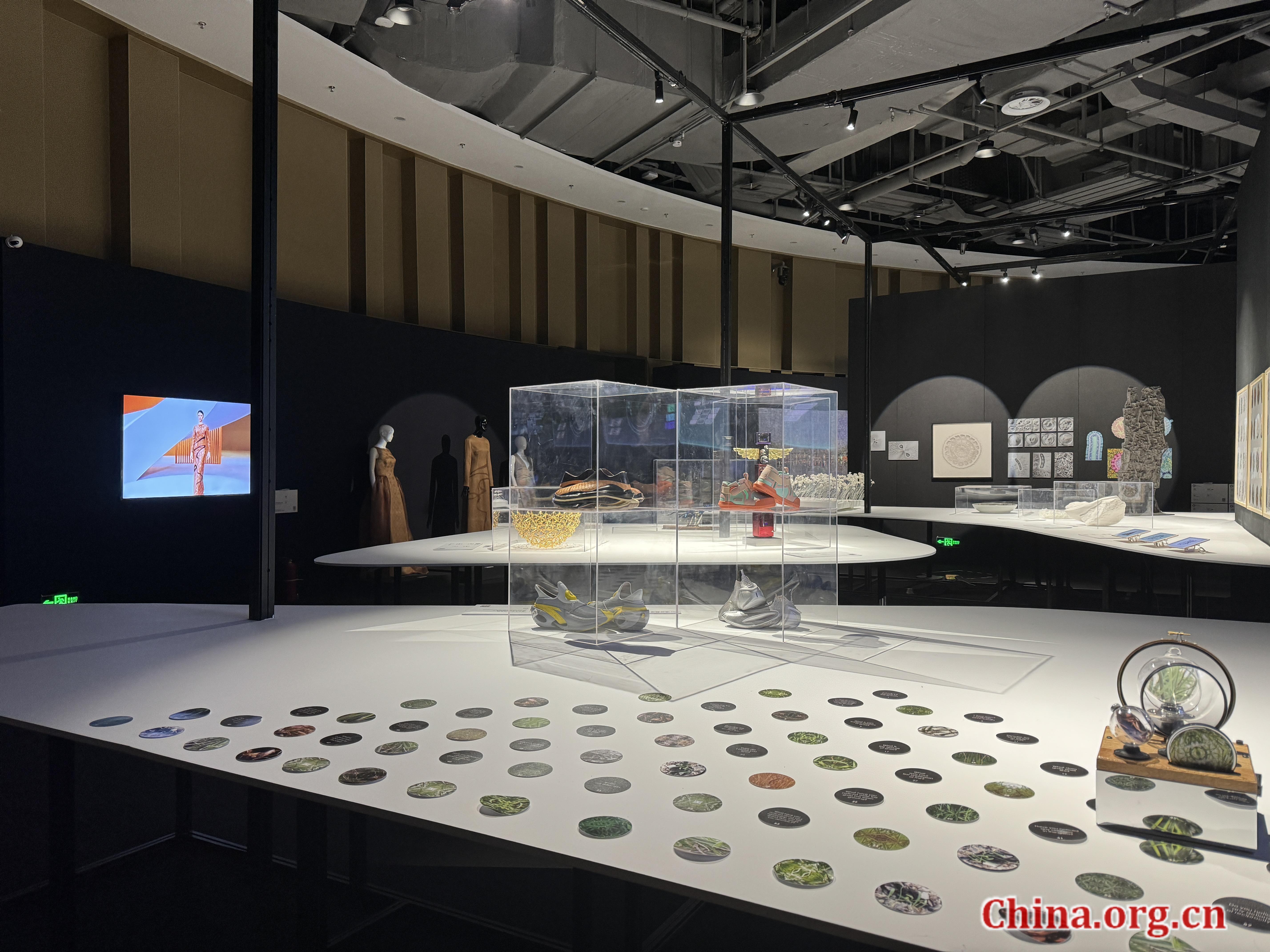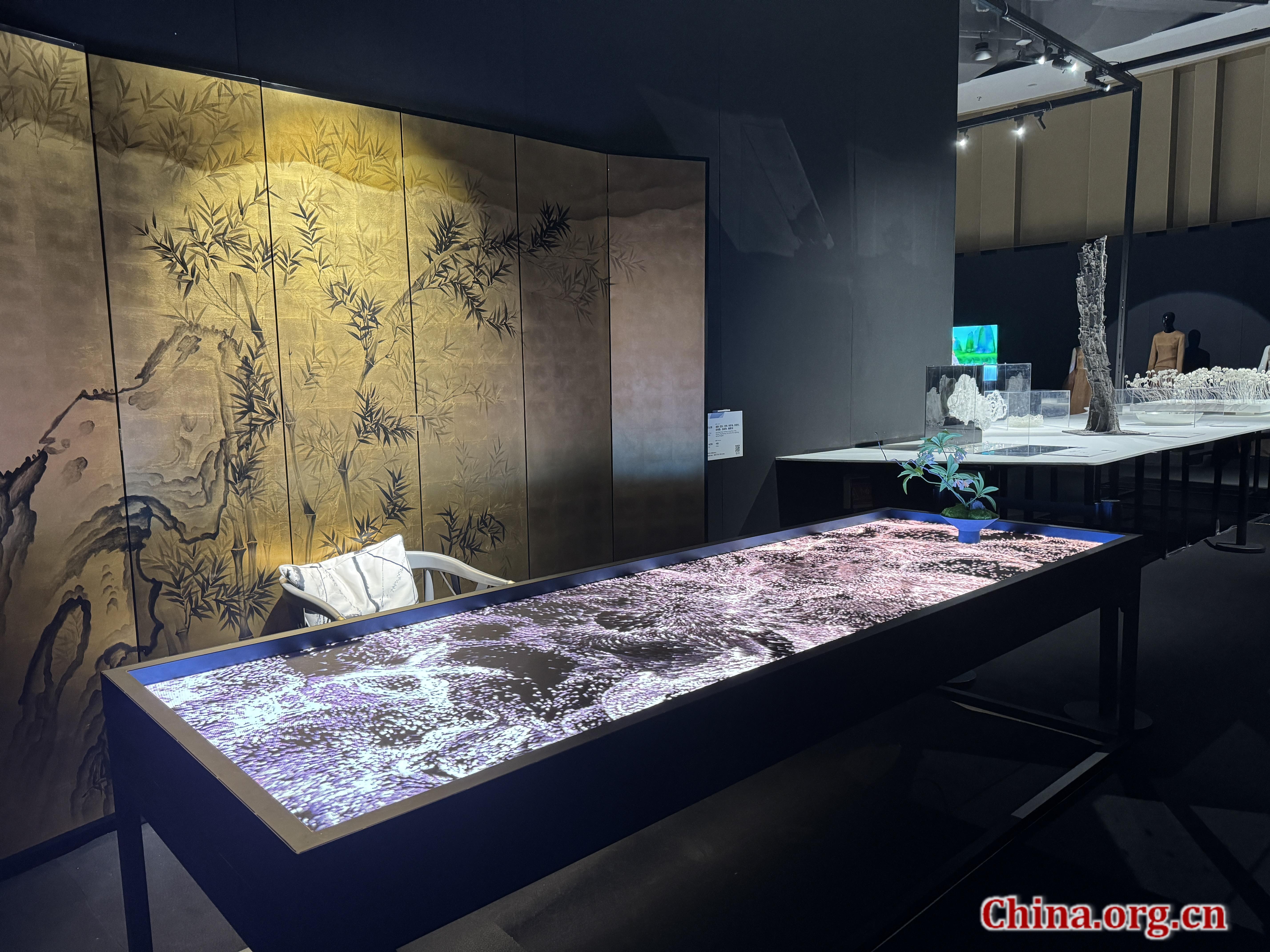China.org.cn , March 6, 2024
What can bring together artists and scientists to brainstorm interdisciplinary collaboration, giving them an outlet to utilize similarities and differences between their fields in order to facilitate mutual interaction? Tsinghua University has provided a platform for such discussions, inviting global insiders to share their views on future integration between the arts and sciences.

The 6th Art and Science International Symposium opens on March 1, 2024, in Beijing. [Photo by Zhou Jing/China.org.cn]
On March 1-2, the Academy of Arts & Design of Tsinghua University (AADTHU) and Tsinghua University Art and Science Research Center organized the 6th Art and Science International Symposium in Beijing. More than 30 artists and scientists from China and abroad delivered keynote speeches to discuss convergence of artistic expression and scientific exploration.
"Differences between art and science are important to their integration," said Ma Sai, dean of AADTHU, in an interview with China.org.cn, "and one of the core values of our academy is to foster talents by combining disciplinary differences in our teaching and studying." He added that simple integration between the arts and science is not constructive unless "chemical reaction" emerges to produce new works or concepts. He encouraged scholars and students to actively embrace new technologies, such as artificial intelligence (AI), to enable more innovation.

Ma Sai, dean of AADTHU, delivers a speech at the 6th Art and Science International Symposium on March 1, 2024, in Beijing. [Photo by Zhou Jing/China.org.cn]
Francesco Zurlo, dean of the School of Design at Polytechnic University of Milan, also shared his views with China.org.cn, agreeing that differences between art and science serve as a vital part in their integration. He said artists and designers are able to "act like antennas" by being attentive to environmental and social issues, and then portraying these concerns to the general public in an artistic way, which is "one of the most important capabilities of artists and designers," he added. This sensibility can assist scientists to develop corresponding technologies or provide better solutions to serve society at large, Zurlo said.
Sun Maosong, professor with the Department of Computer Science and Technology at Tsinghua University and a foreign fellow of the European Academy of Sciences, agreed that art-science integration has raised high requirements for both artists and scientists. To achieve a higher level of collaboration, he believes artists should be capable to raise weighty and challenging questions, while scientists should have the ability to figure out practical and targeted solutions. "But first of all, they should sit down and talk. To achieve this goal, art serves as one of the main driving forces in bringing artists and scientists together for further discussion. When art-related demands are raised and defined, scientists can use existing technologies or explore new ones to respond," Sun stated.
Peter Childs, founding director of Dyson School of Design Engineering, Imperial College London, explained during his speech at the symposium that scientists are important because they advance human understanding of the physical world, "but that is not enough." "Design could be regarded as an enabler, enabling people to generate new ideas and provide connection between ideas and reality," Childs stated. Therefore, the fusion of art and science is an important subject and "critical for us to recognize its value." He added that people want their future to be better, and "this is at the heart of what design is about."

Artworks on display at the 6th Art and Science International Exhibition at the National Communication Center for Science and Technology on Feb. 29, 2024, in Beijing. [Photo by Zhou Jing/China.org.cn]
The 6th Art and Science International Symposium and its parallel forum were part of the 6th Art and Science International Exhibition and Symposium. Under the theme of "Parallel Time and Space — Experience, Inclusivity, Exploration," these events saw more than 30 world-class artists and scientists deliver keynote speeches on interdisciplinary collaboration and other related topics at the National Communication Center for Science and Technology in Beijing.
Meanwhile, nearly 100 artworks created by renowned artists, scientists, engineers and designers from more than 10 countries have been on exhibit at the National Communication Center for Science and Technology since Jan. 14. This exhibition aims at investigating the intersection of artistic expression and scientific exploration. The exhibition was originally planned to end on March 3, but has since been extended to last until March 31.
Exhibition curator Zhao Chao, also an AADTHU professor, told China.org.cn that in this day and age culture and society have undergone new adjustments, bringing about new changes in both artistic and scientific innovation. "We are thinking about not only collaborative and explosive innovation, but also completely new transformation of industry and society accompanied by forward-thinking breakthroughs," Zhao explained. Therefore, the exhibition focuses on exploring the intersection between art and scientific fields, such as AI, big data and physiological science.

Artworks on display at the 6th Art and Science International Exhibition at the National Communication Center for Science and Technology on Feb. 29, 2024, in Beijing. [Photo by Zhou Jing/China.org.cn]
As Qin Chuan, AADTHU Party secretary introduced, the first Art and Science International Exhibition and Symposium was launched in 2001 by Nobel Prize winning physicist Professor Tsung-Dao Lee and late master artist Professor Wu Guanzhong. The event hosts cutting-edge explorations in both art and science, as well as related academic discussions. The purpose of the event is to broaden and deepen art and science research, and to promote art and science innovation and development. The previous five events were held in 2001, 2006, 2012, 2016 and 2019, respectively, with great success. "As a platform for international art and science exchanges, we hope to gather world-class artists, designers, engineers and scientists to discuss more possibilities of art-science collaboration and their diversified development in the future, so as to inspire new ideas to achieve new solutions in a fast-changing world."
The event was co-hosted by the China Association for Science and Technology Science Communication Center, Tsinghua University, and the China Science and Technology Museum, and organized by the Academy of Arts & Design at Tsinghua University (AADTHU) along with the Tsinghua University Art and Science Research Center.
